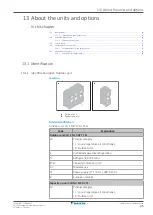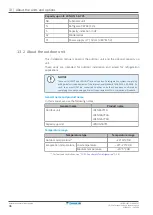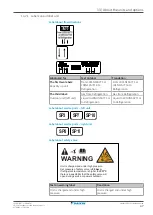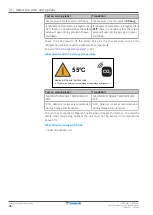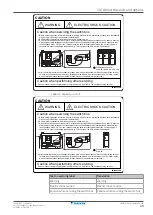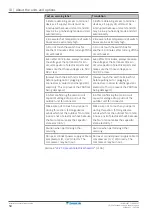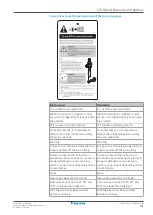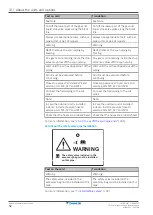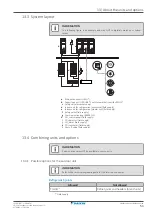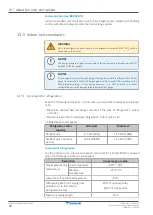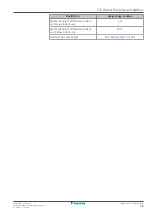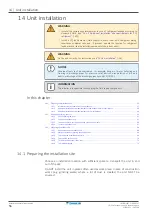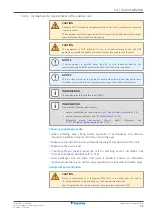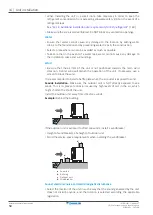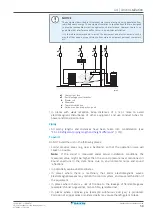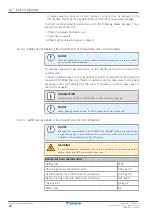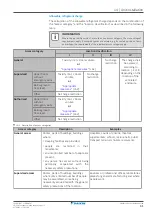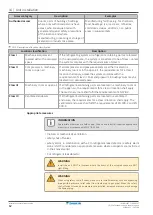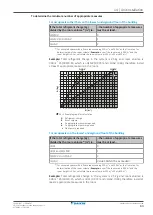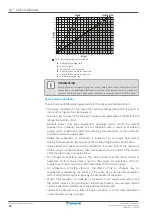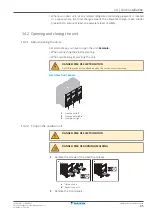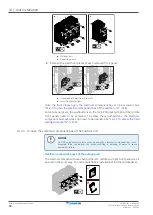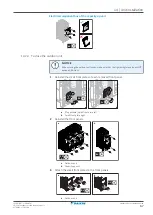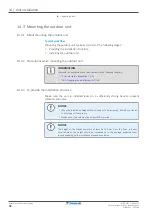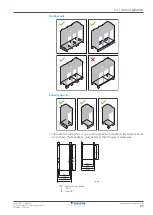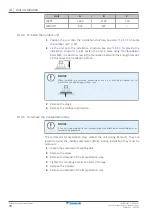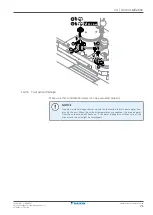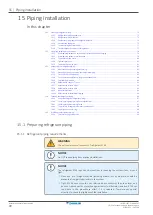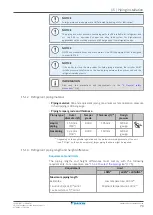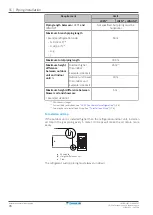
14
|
Unit installation
Installer and user reference guide
59
LREN8~12A7 + LRNUN5A7
CO₂ ZEAS outdoor unit and capacity up unit
4P704142-1 – 2022.08
NOTICE
The equipment described in this manual may cause electronic noise generated from
radio-frequency energy. The equipment complies to specifications that are designed
to provide reasonable protection against such interference. However, there is no
guarantee that interference will not occur in a particular installation.
It is therefore recommended to install the equipment and electric wires in such a
way that they keep a proper distance from stereo equipment, personal computers,
etc.
a1
a2
a1
a2
a1
a2
c
d
e
b
≥1500
≥1500
≥1500
≥1500
a1
a2
(mm)
a1
Overcurrent fuse
a2
Earth leakage circuit breaker
b
Blower coil
c
Showcase
d
Communication box
e
Outdoor unit and capacity up unit
▪
In places with weak reception, keep distances of 3 m or more to avoid
electromagnetic disturbance of other equipment and use conduit tubes for
power and transmission lines.
Piping
▪
All piping lengths and distances have been taken into consideration (see
"15.1.3 Refrigerant piping length and height difference"
To avoid
Do NOT install the unit in the following places:
▪
Sound sensitive areas (e.g. near a bedroom), so that the operation noise will
cause no trouble.
Note:
If the sound is measured under actual installation conditions, the
measured value might be higher than the sound pressure level mentioned in
Sound spectrum in the data book due to environmental noise and sound
reflections.
▪
In potentially explosive atmospheres.
▪
In places where there is machinery that emits electromagnetic waves.
Electromagnetic waves may disturb the control system, and cause malfunction of
the equipment.
▪
In places where there is a risk of fire due to the leakage of flammable gases
(example: thinner or gasoline), carbon fibre, ignitable dust.
▪
In places where corrosive gas (example: sulphurous acid gas) is produced.
Corrosion of copper pipes or soldered parts may cause the refrigerant to leak.

